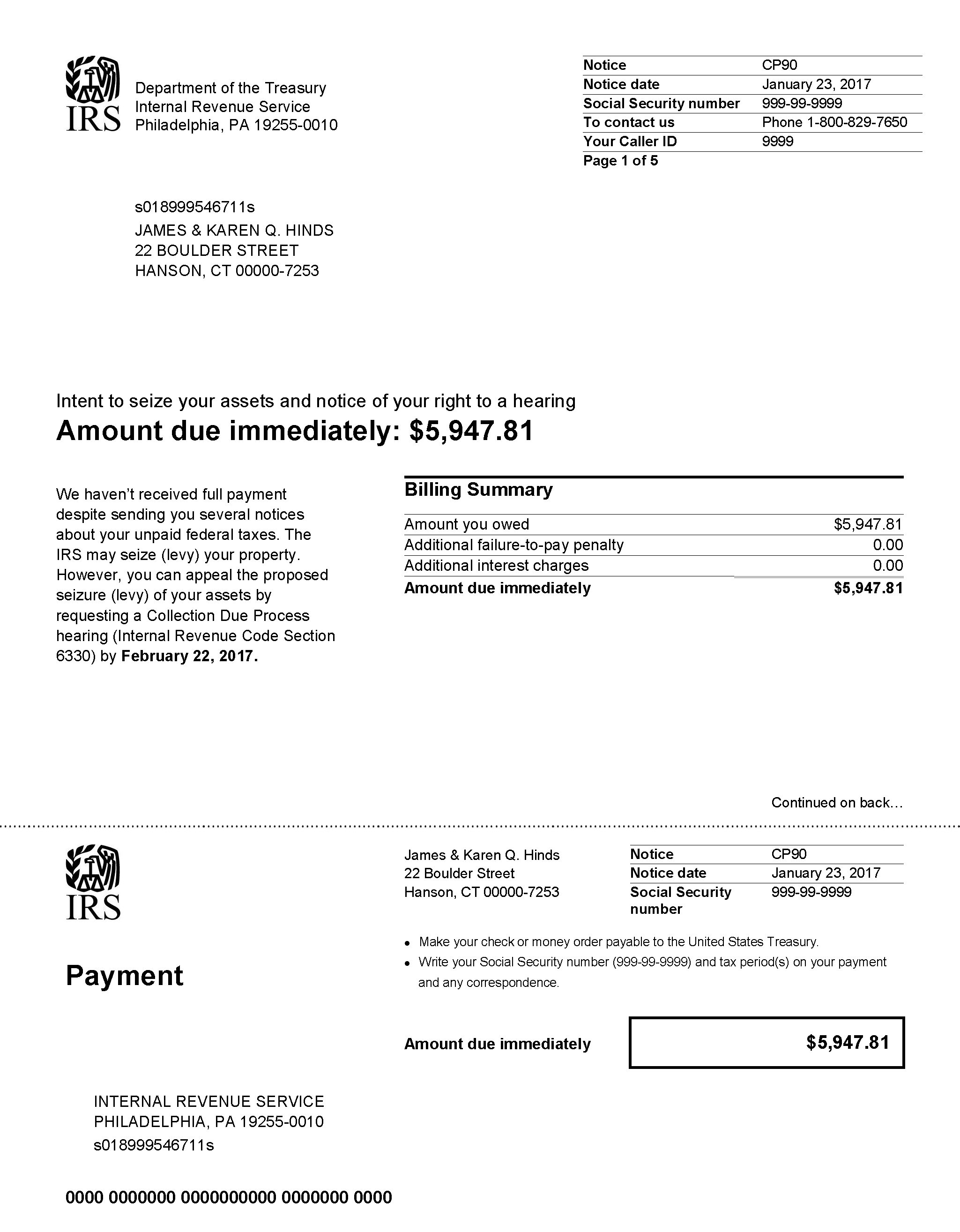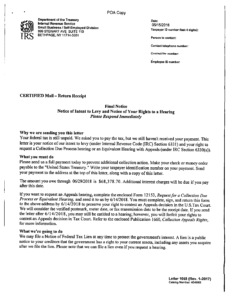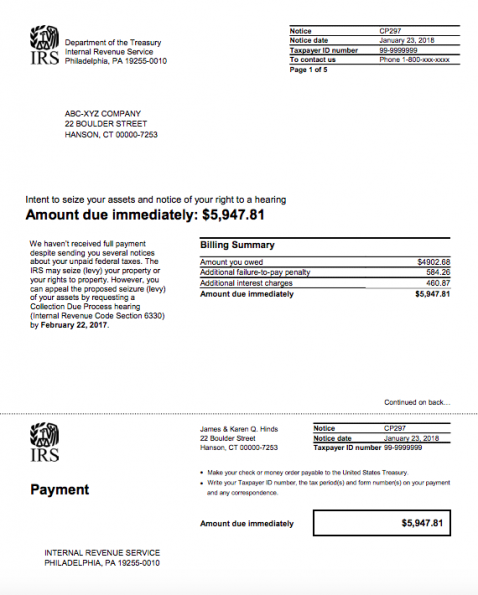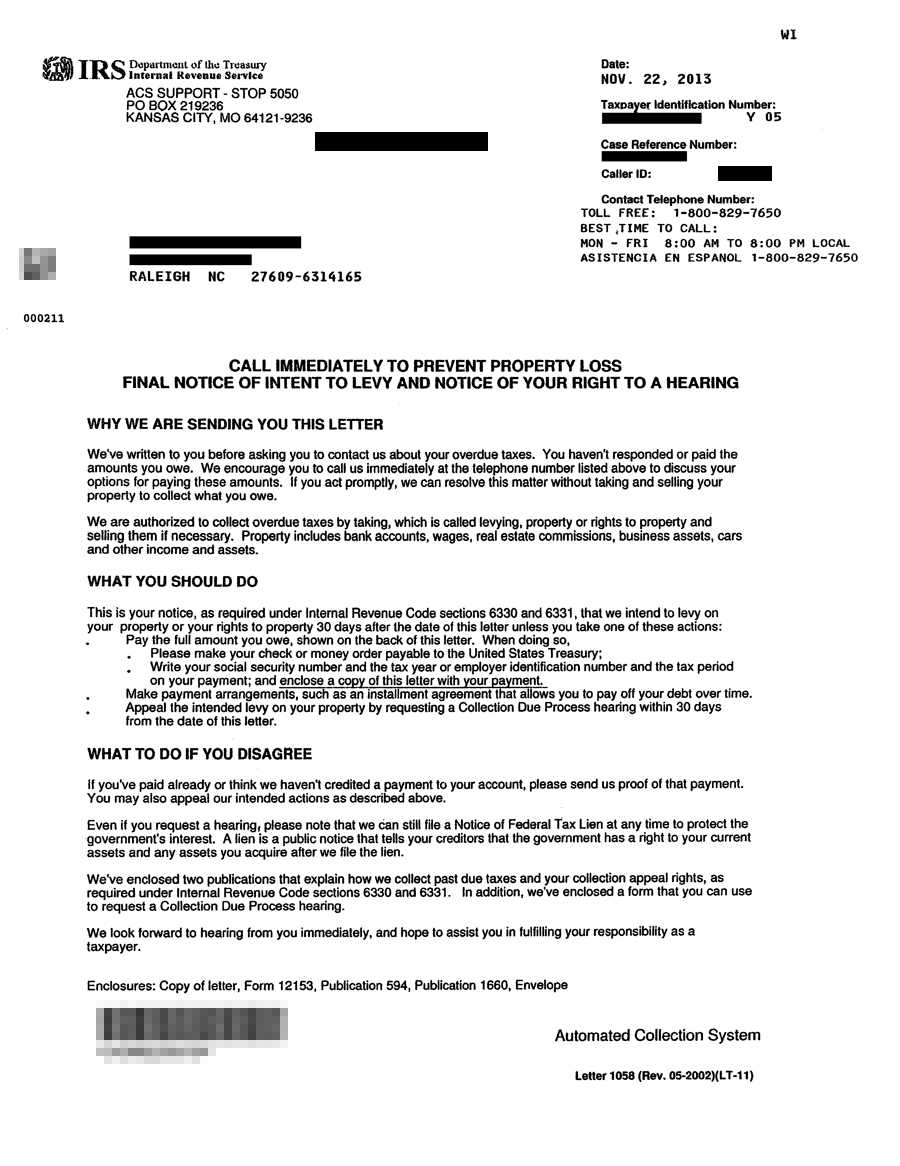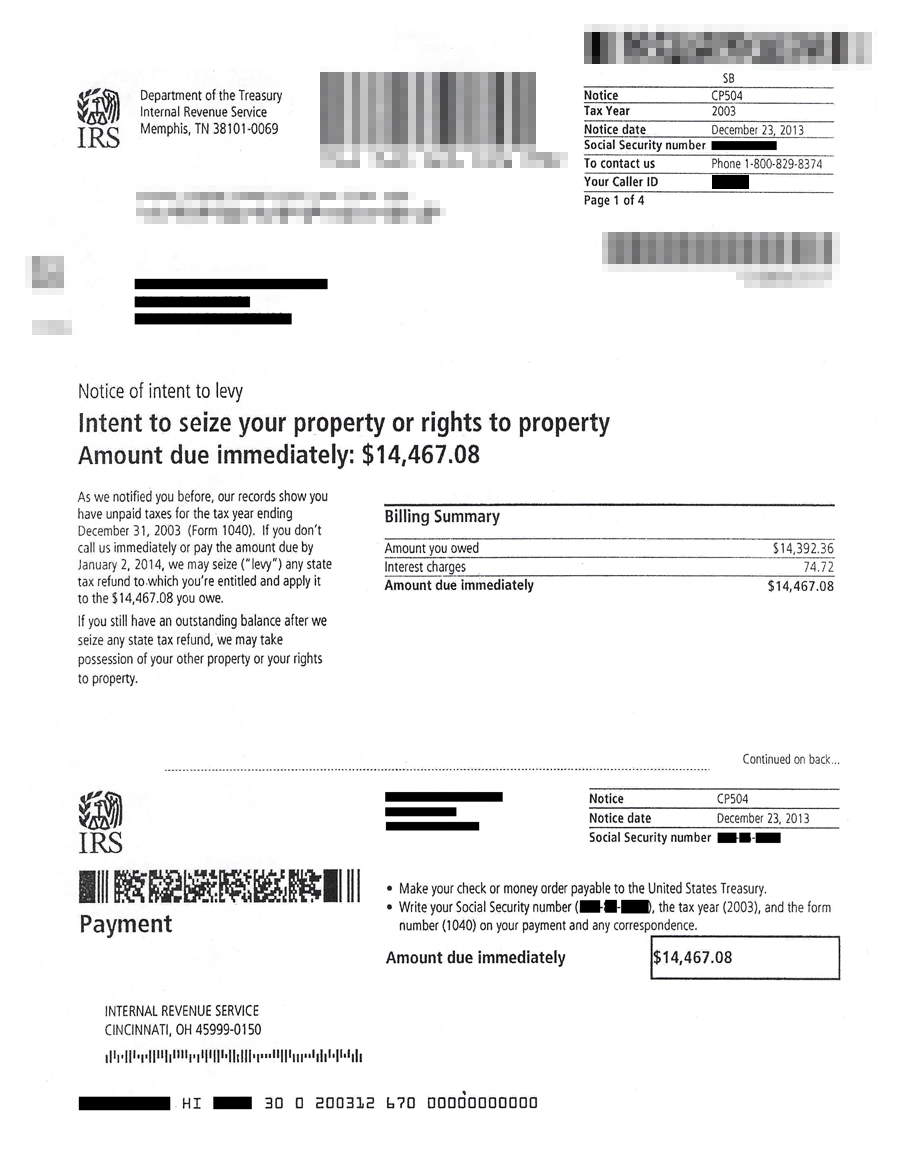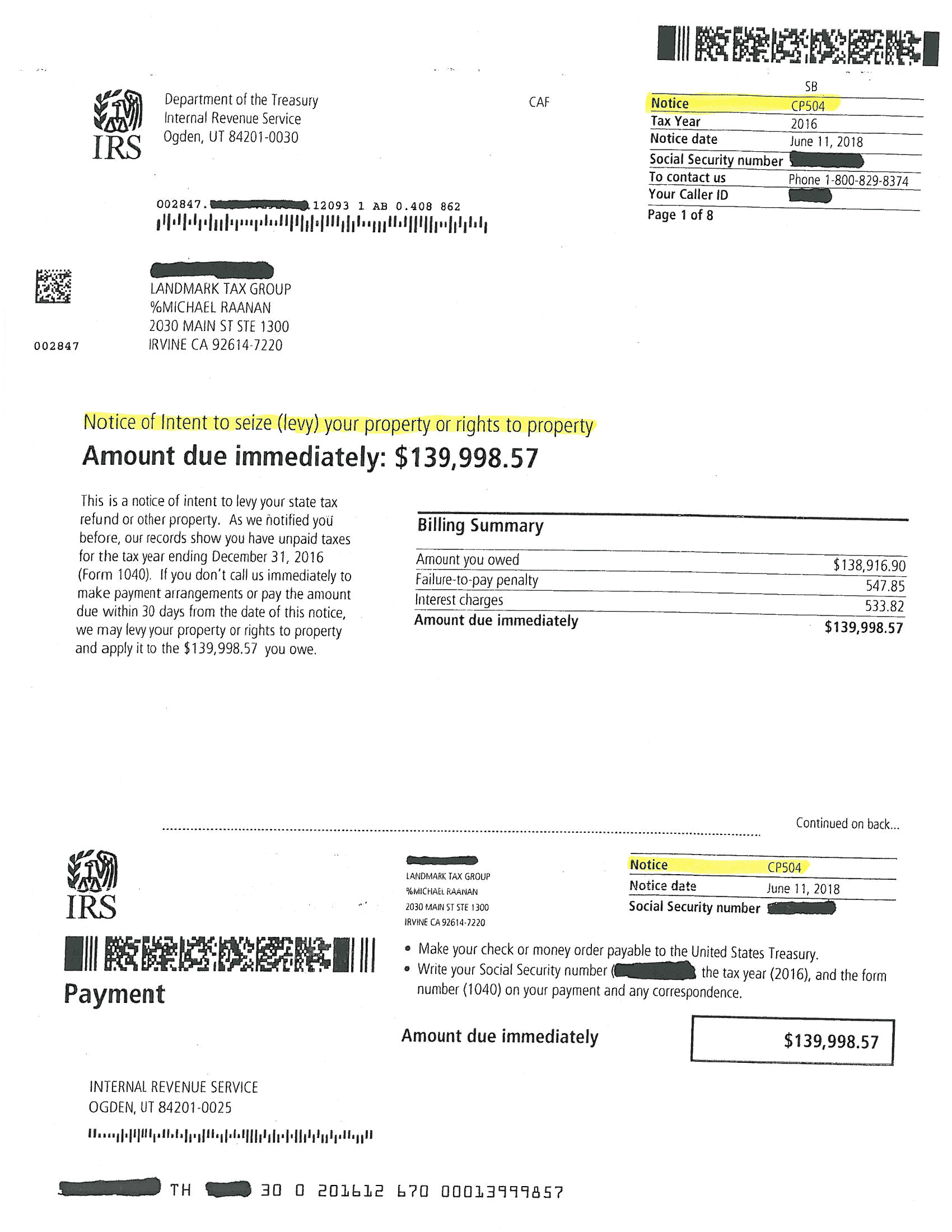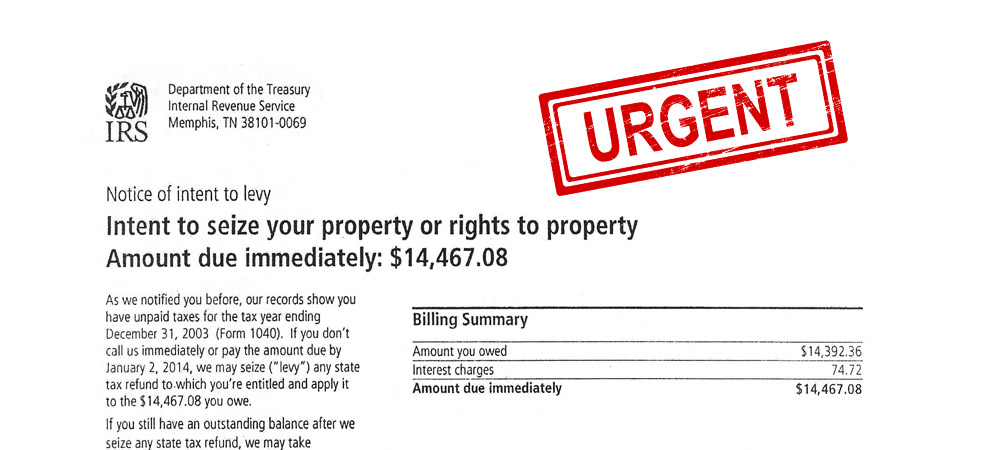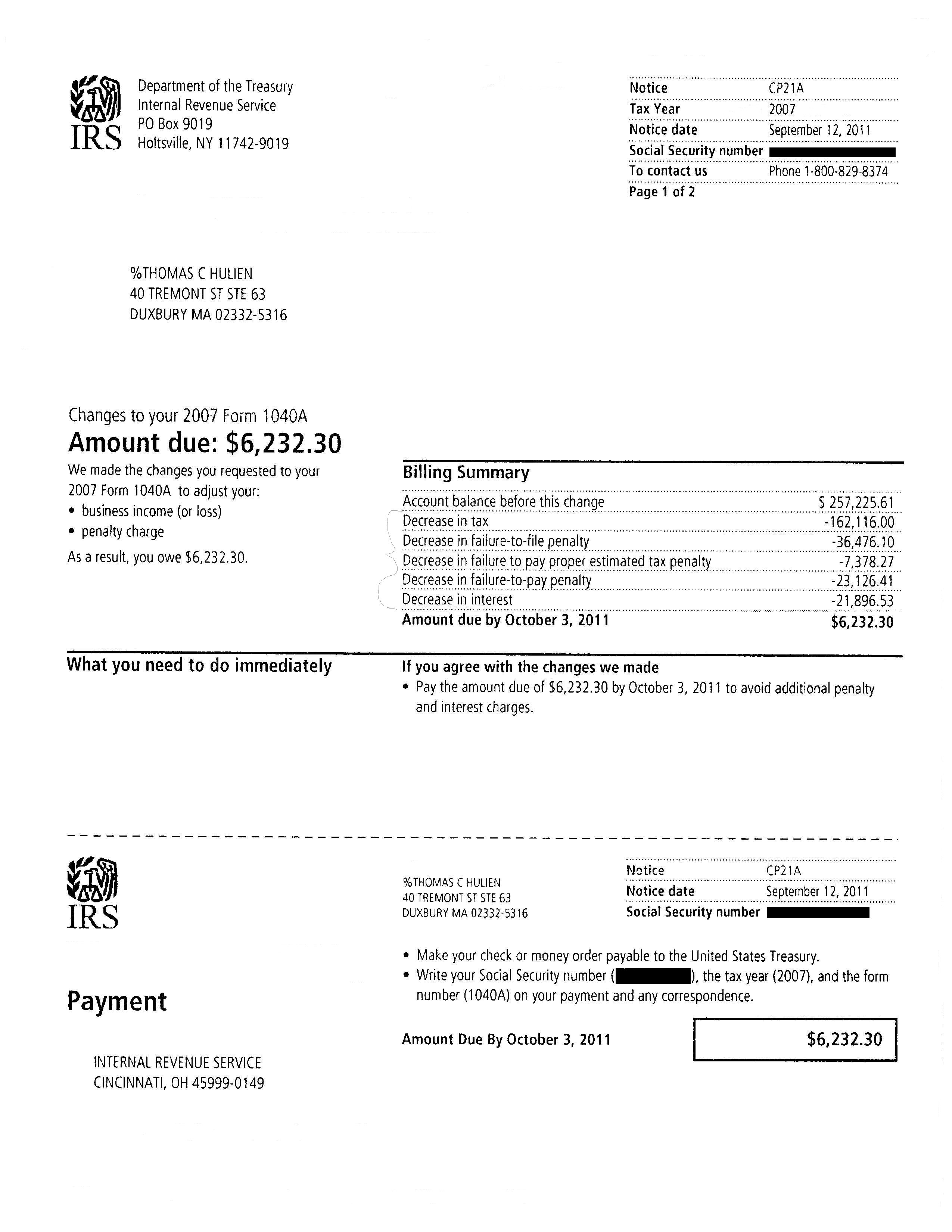Irs Final Notice Of Intent To Levy

The irs final notice of intent to levy is probably the most important letter the irs will send you.
Irs final notice of intent to levy. The final notice of intent to levy gives the irs the right to seize your assets. This is often the final notice before the irs actually seizes assets. The irs sent you a final notice of intent to levy and notice of your right to a hearing levy notice at least 30 days before the levy. Although not all of these notices say final notice of intent to levy fnil for the sake of convenience i will henceforth refer to them as fnil if you have yet to receive an fnil you can be reasonably certain that the irs will not garnish your income or seize your assets other than tax refunds to which you might be entitled any time soon even if the irs says they will.
Irs mails any final notice of intent to levy by certified mail return receipt requested. This notice explains your appeal rights and that the irs will seize your assets if you don t respond in time. The irs may give you this notice in person leave it at your home or your usual place of business or send it to your last known address by certified or registered mail return receipt requested. If you don t agree with the information on the final notice of intent to levy and notice of your right to a hearing you can file an appeal.
A final notice of intent to levy is the notice a taxpayer is given that they have 30 days to a right to claim something known as a collection due process hearing. If you look at the sample notice again you will see that the irs provides you with 30 days to respond. With the final notice you have rights to stop the levy before it happens and meet with an irs settlement officer to negotiate a solution that is better than levy. At this hearing a taxpayer should present something called a proposed collection alternative or raise issues why they don t owe the tax that is claim innocent spouse relief or an audit reconsideration.
Notice of intent to levy and notice of your right to a hearing. The irs sent multiple notices requesting payment from you but never received payment. The irs sends letter 1058 or lt11 to notify you of your right to a hearing on the matter and as your final notice of intent to levy your property potentially including your paychecks bank accounts state income tax refunds and more. After the 30 days have passed the irs can proceed with seizing any funds you have in a bank account or garnish your wages.
Intent to seize your assets and notice of your right to a hearing. An irs intent to levy notice is a notice the irs sends if it plans to seize your assets. By far a final notice of intent to levy is the most critical legal procedure in a federal tax collection case. This is your notice of intent to levy as required by internal revenue code section 6331 d.
